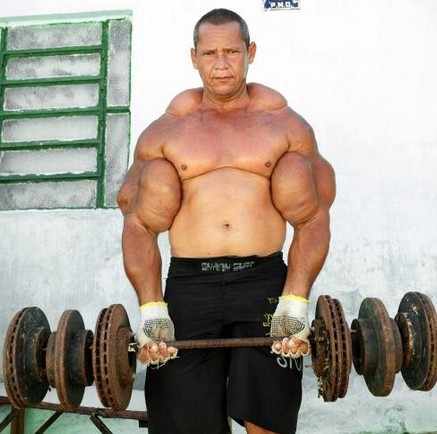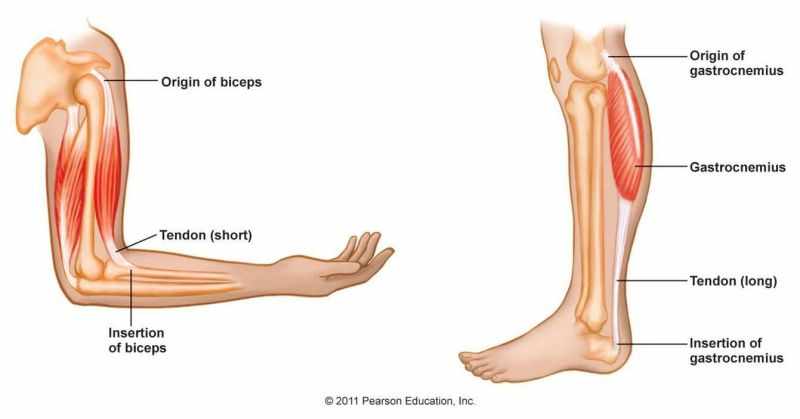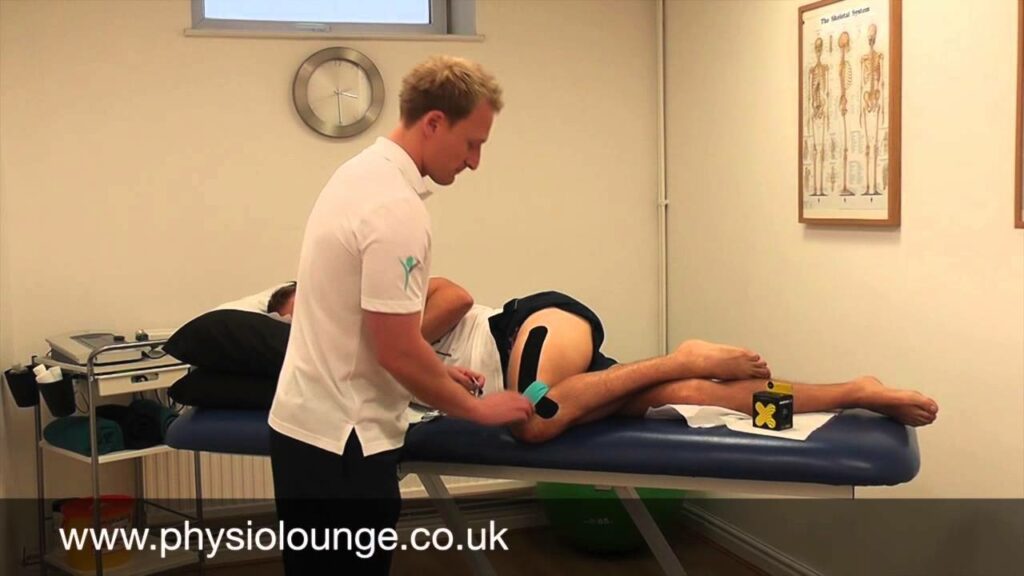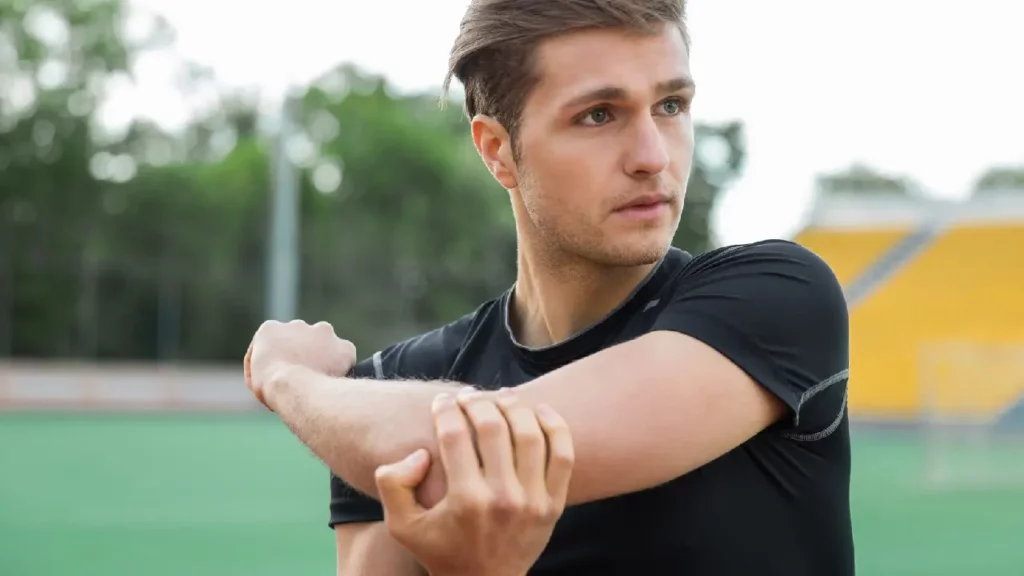‘Don’t worry, it’s JUST a pulled muscle’
How many times have you heard that? Whether from a friend at work, Alan who looks after the kit down at the club or worse, a qualified health professional whom you’ve sought advice from. Now we’re not trying to over dramatise a muscle injury, nobody’s dying from a pulled muscle, but you should take management seriously and treat it well in the early stages.
It helps to know a little bit about what muscles are. So… what are they? This guy knows…every day’s an arms day!!!

Generally speaking there are three types of muscle in the body; visceral (smooth muscle), cardiac muscle and skeletal muscle.Skeletal muscle is the tissue that enables movement, stabilises joint position and maintains posture. For the purpose of this blog we will be discussing skeletal muscle.
Anatomy of muscle tissue is incredibly complex but lets try to keep this fairly straightforward.
Skeletal muscles usually attach bone to bone, via tendons, which pull on bones creating movement or compressing the joints to stabilise them.
The place at which the muscle connects to the bone that remains stationary is the origin. The other end of the muscle attachment that causes movement is called the insertion.

Rarely do muscles work in isolation; usually there are a complex series of contractions and relaxations within different muscles to produce movement and stabilise joints.
Muscle Injury
Muscles can be injured in a variety of ways, whether that be direct trauma, overuse or acceleration/deceleration injury. The muscles that are most susceptible to strains are those muscles which cross over two joints. Muscles like the hamstrings, the rectus femoris in the thigh or the gastrocnemius in the calf. This is due to the greater load placed through that tissue as it crosses two joints. When we overstretch or overload a muscle and it breaks down, we refer to it as a strain. As with ligament injuries (sprains), muscle strains are classified using three grades:
Grade I Muscle Strain
The tissue is overstretched and as a result small tears develop. This can be associated with pain but generally doesn’t affect muscle strength. Grade I strain will usually resolve within 2-4 weeks with the correct care.
Grade II Muscle Strain
This involves more of the muscle fibres being torn but not complete separation. Pain may be more severe, and there may be more bruising due to the increased bleeding. The area is usually painful to the touch and a palpable ‘defect’ may be present. Muscle power may also be reduced. A grade II strain will resolve with the correct care and a good rehabilitation program.
Grade III Muscle Strain
Grade III strain, or severe muscle strain, is the most serious among the three grades of muscle strains. Most of the muscle fibres are torn. In some cases, the muscle is completely torn or ruptured. Pain, swelling, tenderness, and bruising are usually present. Movement is usually difficult. A grade III strain may take 10-12 weeks to settle and could require a surgical intervention.
How do I treat a muscle strain?
The most important thing to do is get the injury assessed by a qualified medical professional. That way the injured muscle can be diagnosed correctly and you can take the appropriate action. Early intervention can save a lot of time further down the line. Everyone thinks their pulled muscle will get better in a week or so… until it doesn’t! Returning to exercise or sport too early without adequate strengthening can be detrimental to the recovery of the tissue. Worse still, not treating a grade I strain properly and returning to activity too early can easily lead to to a grade II or III muscle strain.
- Compression, Elevation, Mobilisation
In the early stage of the injury the inflammatory process gets to work stimulating tissue healing. This is an entirely natural process and important for the regeneration of injured tissue. It is for this reason that a lot of literature is no longer recommending early use of non-steroidal anti-inflammatory (NSAID) medication, such as ibuprofen, as it may inhibit the early healing process and lead to delays in appropriate healing times. We have a similar stance with regard to the use of RICE in acute muscle injuries which you can read about here.
Compression and elevation where possible is useful at this stage of injury to support the tissue and help control and reduce swelling. Remember, inflammation is good but excessive swelling is not particularly useful.
Gently pushing range of movement (ROM) within comfortable limits early on is important to mobilise the tissue and prevent any scarring from becoming irritable and restrictive.
- Strengthening
A crucial part of rehab is a good strengthening program that not only focuses on the affected muscle but also on the surrounding area. For example, if you strain a hamstring, part of your program should include work to strengthen and improve control of the gluteal muscles around the hip, in order to help control the surrounding joints and distribute load efficiently.
Another important part to a strength program is emphasis on the eccentric phase of strengthening the affected muscle. Simply put, muscles contract in two different ways; concentric and eccentric.
Concentric – the muscle contracts and shortens
Eccentric – the muscle remains under tension but lengthens at the same time.

In terms of improving control in an injured muscle, eccentric loading is important as it helps with deceleration of body parts, which in a lot of cases is how a strain initially occurs. You should make sure you have good guidance on how to perform eccentric loading exercises on your affected muscle at the right time, as incorrect performance or adding eccentrics in too early can irritate the injury and delay recovery.
- Plyometric loading and run progression
Plyometric (plyo) training is a way to improve muscle power. Muscular power is the ability to create as much force as possible, as quickly as possible. Pushing off when sprinting, jumping to catch a ball, and throwing a left hook are all examples of power movements. In terms of returning to sport and exercise after a muscle strain, plyo work is crucial. Even if you’re relatively sedentary, adding plyo work in will only assist with your recovery.
‘I don’t understand, it felt fine’ is the phrase people use when we tell them not to run… they run, then they break again. When considering a return to running it should be approached in a very graded steady manner. Even a light jog done too early on in the rehab phase can set you back and worse still cause further injury. Get some good advice, get a good return to run program and follow it. This could include the use of zero gravity treadmill and pool jogging initially.
- Return to sport drills
So your pain has settled, swelling gone, movement is back, you’re as strong as Geoff Capes (reference for the 30 years plus amongst us) and you can jump like Michael Jordan. Now it’s time to get specific with your movement. If you’re returning to sport you need to perform drills and movements that mimic what you do during a game or competition. If you’re a rugby player then you need to step and hit some tackle bags. If you’re a tennis player then you need to return some shots from the edge of the court, and if you’re a footballer you need to gel your hair and work on stepping around the defender. There’s no secret formula, you just need to gradually reproduce movements that occur during play, so that when game day comes you’re calf strain doesn’t explode!
- Mobility and Maintenance
There’s likely a reason that explains why you suffered the injury in the first place. Not always, sometimes injuries just happen and there’s no way you can prevent them. However, a lot of the time there’s a root cause associated with the injury. For example, a footballer may have reduced movement at the ankle from old injuries, which in turn loads up his calf and eventually the calf breaks and you get a strain.
Therefore, any good physio or rehab specialist should be advising you on movement faults that exist and how you can manage them in the future with strength and control work, mobility exercises, or some regular hands on maintenance treatment.
So remember… get it checked by someone who knows (not Alan from the club), take care of it early on, and do your rehab! For more information on how physiotherapy can help with a muscle strain or for a free telephone consultation, contact us here.



